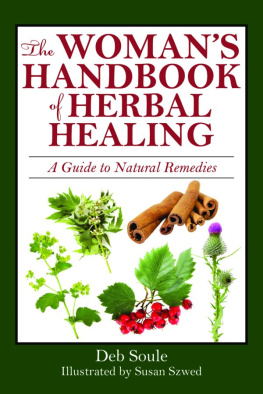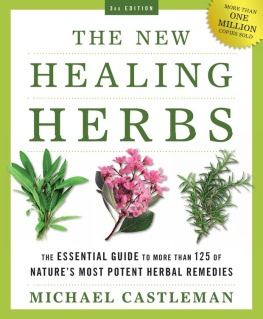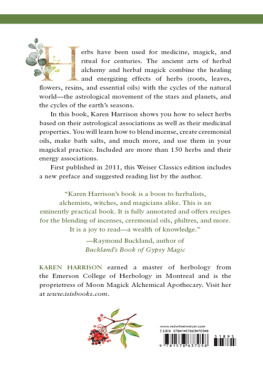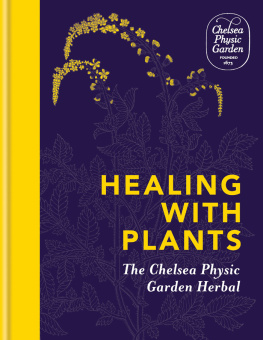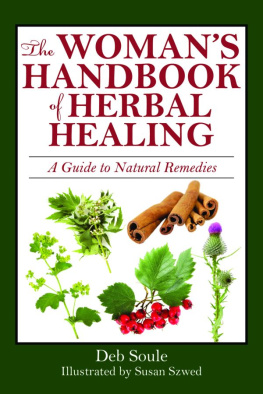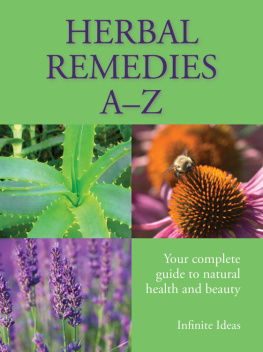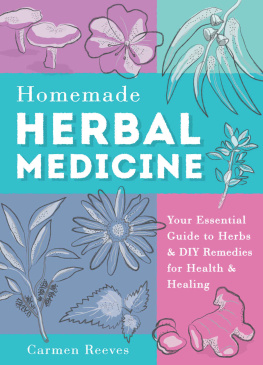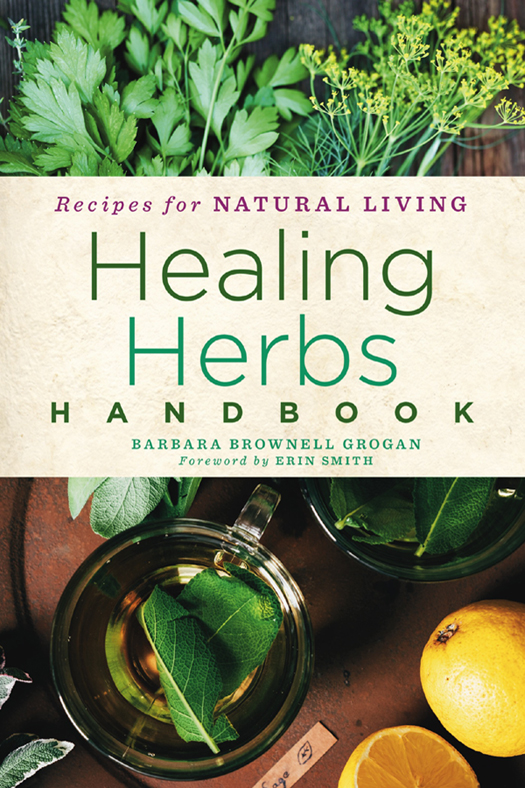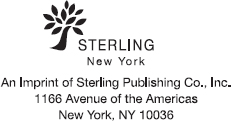STERLING and the distinctive Sterling logo are registered trademarks of Sterling Publishing Co., Inc.
Text 2018 Barbara Brownell Grogan
Cover and foreword 2018 Sterling Publishing Co., Inc.
All rights reserved. No part of this publication may be reproduced, stored in a retrieval system, or transmitted in any form or by any means (including electronic, mechanical, photocopying, recording, or otherwise) without prior written permission from the publisher.
This publication is intended for informational purposes only, and the publisher does not claim that this publication shall provide or guarantee any benefits, healing, cure, or any results in any respect. This publication includes alternative therapies that have not been scientifically tested and is not intended to provide or replace conventional medical advice, treatment, or diagnosis or be a substitute to consulting with licensed health-care providers. The publisher shall not be liable or responsible in any respect for any use or application of any content contained in this publication or any adverse effects, consequence, loss, or damage of any type resulting or arising from, directly or indirectly, such use or application. Any trademarks are the property of their respective owners, are used for editorial purposes only, and the publisher makes no claim of ownership and shall acquire no right, title or interest in such trademarks by virtue of this publication.
ISBN 978-1-4549-2938-3
For information about custom editions, special sales, and premium and corporate purchases, please contact Sterling Special Sales at 800-805-5489 or .
sterlingpublishing.com
Cover design by Elizabeth Mihaltse Lindy
Interior design by Christine Heun
For image credits see
To my friend Linda B. White, who opened the door.
FOREWORD
You are about to take a step on a wonderful herbal journey. Plants are often overlooked, compared to the more interactive and compelling members of the animal kingdom. But these quiet beings are quite amazingturning sunlight into energy, providing the air we breathe, the food we eat, the roof and walls around us, and medicine that heals us. Even today, in our technologically rich era of modern medicine, natural products and their derivatives are the basis for more than 50 percent of all prescription medications we use. More than a quarter of them derive from plants alone. Quite simply, we cannot survive without plants.
My journey with herbs began more than 25 years ago, much like yours iswith a book in hand. I was fascinated with herbs and the history of using plants for medicine. Since then, Ive been lucky enough to turn a passion into a career, and, as an herbalist and ethnobotanist, Ive traveled the world, learning and educating about herbs. These global and diverse experiences have taught me one indisputable fact: plants and herbal medicines are essential to our health and well-being as humans, so much so that we will build our lives around herbs. Ive watched women walk more than 20 miles a day to collect herbs; Ive met traditional healers in Bolivia who traveled hundreds of miles to bring their medicine to rural communities, and Ive watched women line winding, narrow streets in Morocco so that traditional healers could help reverse their infertility.
Why? Why do herbs hold center stage in so many peoples lives? The answer is multifaceted. One, of course, is because they are effective. All of the herbs discussed in this book have been used for thousands of years. That type of resilience comes from effectiveness; people continued to use them because they worked. Herbs are gentle on the body. This isnt to say that there are no possibilities of harm from herbs; there are, after all, many poisonous and strong plants. But in an era when misuse and overuse of prescription medications is an ever-growing problem with deadly effects, herbal medicines are incredibly safe.
Herbs are also cost effective. As youll learn in these pages, many of our best herbs are found right outside your/our door. In an age of ever-rising healthcare costs, especially in the US, free and safe ways to support our optimal health are needed and welcome. This easy access and cost effectiveness mean herbs also help people feel empowered to take charge of their own health. Herbs are not only powerful allies when sickness arises, but they also offer deep, nourishing support for optimum long-term health.
In addition to all these practical reasons why herbal medicines persist, another reason has become apparent during my years as an educator: herbs are familiar. We co-evolved with plants, and our bodies, on some levelperhaps cellularseem to remember this.
You are in good hands with Barbara Bronwell Grogan as your guide for this herbal journey. A longtime proponent and lover of herbs, she has helped birth some of our best resources on herbs as an author and former editor-in-chief for National Geographic Books. In this book you will find a wonderful beginners guide to working with herbs. It provides you with an introduction to 60 commonly used herbs, common ailments and herbs used for those ailments, as well as easy recipes to get you started on your herbal journey. Look for the actions of each herb to give you a quick idea of its many benefits, and find notes and cautions on known interactions with prescription medications.
Learning about herbs has many layers, and for this reason can feel overwhelming at first. Healing Herbs Handbook provides you with an easily accessible reference guide. Keep an eye out for the herbs that appeal to you the most. Those are often the best to start working with. Or go by what your body needs in this moment.
Herbalism is a living, breathing tradition. By reading these pages, trying these recipes, and beginning to use herbs, you are now part of this ancient tradition.
ERIN SMITH is a clinical herbalist and ethnobotanist and has been working with medicinal plants for over 25 years. She teaches internationally and is the creator of Plant-Passionate Living (www.plantpassionateliving.com), an interactive program for greater health and vitality through a deeper relationship with plants.
Gurib-Fakim, A. (2006) Medicinal Plants: traditions of yesterday and drugs of tomorrow. Mol Aspects Med. 27(1): 1-93.
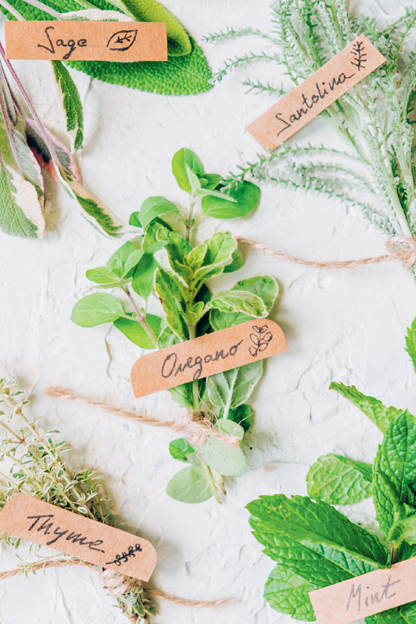
Part One
Introduction
What are healing herbs? Generally they are plants that are used to rid the body of unwanted illness or to enhance overall health. They are the weeds, like dandelions, that grow in your backyard, or the daisy-like echinacea, also called coneflower, waving in an open field. They are the reishi mushroom, a fungus sprouting in damp woods, and the regal sprays of violet-colored lavender holding court in your summer garden, attended by bees and butterflies.
Many herbs you may know first and foremost as culinary herbs: rosemary for roasted chicken; turmeric for curried rice; parsley for buttered carrots; cinnamon for warming hot chocolate or morning oatmeal; ginger for spicy pumpkin pie; tea for an icy, refreshing summer drink. When you look more closely at their make up and their uses in cultures around the world for thousands of years, youll see something more: They heal.


